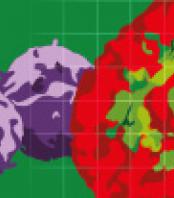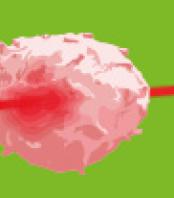Preparative electrophoresis systems for targeted size selection of biomolecules.

Automated microscopy and Spatial Proteomics
Real-time, label free cell analysis
Nano and micro particle analysis

Accelerate to discover
Related topics
Theranostics: From Mice to Men and Back

Jun 25, 2024
Recorded webinar
Presenters: Prof. Dr. Ken Herrmann and Prof. Dr. Katharina Lückerath – Moderator: Hannah Notebaert
Orion 2024 AACR poster: 17-plex single-step stain and imaging of cell Lung Carcinoma

Jun 21, 2024
RareCyte Orion is a benchtop, high resolution, whole slide multimodal imaging instrument. A combination of quantitative...
Hypoxia in the Tumor Immune Microenvironment (TIME)

Jun 6, 2024
Thursday, 11 July 2024, 16:00 CET | 10:00 EST
Zaver M. Bhujwalla, PhD
X-RAD 320 for irradiation therapy during quantifying study for in vivo collagen reorganization

Jun 5, 2024
Quantifying in vivo collagen reorganization during immunotherapy in murine melanoma with second harmonic generation...
Use of MRI and microCT to evaluate gene therapy for the treatment of discogenic back pain

Jun 4, 2024
MRI images were obtained using the 9.4T Bruker BioSpec system, equipped with 40 mm 1H quadrature volume resonator, and...
Exosome-Mediated Delivery of Small Molecules, RNA & DNA for Development of Novel Cancer Therapeutics

Jun 3, 2024
Disha Moholkar of University of Louisville's Gupta Lab
Tuesday, June 11, 2024, 6:30 PM...
Emulate in vivo conditions – introduce shear flow to your experiments with BioFlux system

May 27, 2024
Most research is still conducted in vitro without the presence of flow. We use the BioFlux System to give you the...
High-frequency Ultrasound System For Preclinical Imaging

May 13, 2024
The Prospect T1 is an innovative high-frequency ultrasound system designed specifically for in vivo preclinical imaging...

Nov 30, 2023
The Japanese rhinoceros beetle Trypoxylus dichotomus is a giant beetle with distinctive exaggerated horns present on the head and prothoracic regions of the male. T. dichotomus has been used as a research model in various fields such as evolutionary developmental biology, ecology, ethology, biomimetics, and drug discovery. In this study, de novo assembly of 615 Mb, representing 80% of the genome estimated by flow cytometry, was obtained using the 10 × Chromium platform. The scaffold N50 length of the genome assembly was 8.02 Mb, with repetitive elements predicted to comprise 49.5% of the assembly. In total, 23,987 protein-coding genes were predicted in the genome. In addition, de novo assembly of the mitochondrial genome yielded a contig of 20,217 bp. We also analyzed the transcriptome by generating 16 RNA-seq libraries from a variety of tissues of both sexes and developmental stages, which allowed us to identify 13 co-expressed gene modules. We focused on the genes related to horn formation and obtained new insights into the evolution of the gene repertoire and sexual dimorphism as exemplified by the sex-specific splicing pattern of the doublesex gene. This genomic information will be an excellent resource for further functional and evolutionary analyses, including the evolutionary origin and genetic regulation of beetle horns and the molecular mechanisms underlying sexual dimorphism.
Get more info
Brand profile
Preparative electrophoresis systems for targeted size selection of biomolecules.
More info at:
www.sagescience.com/